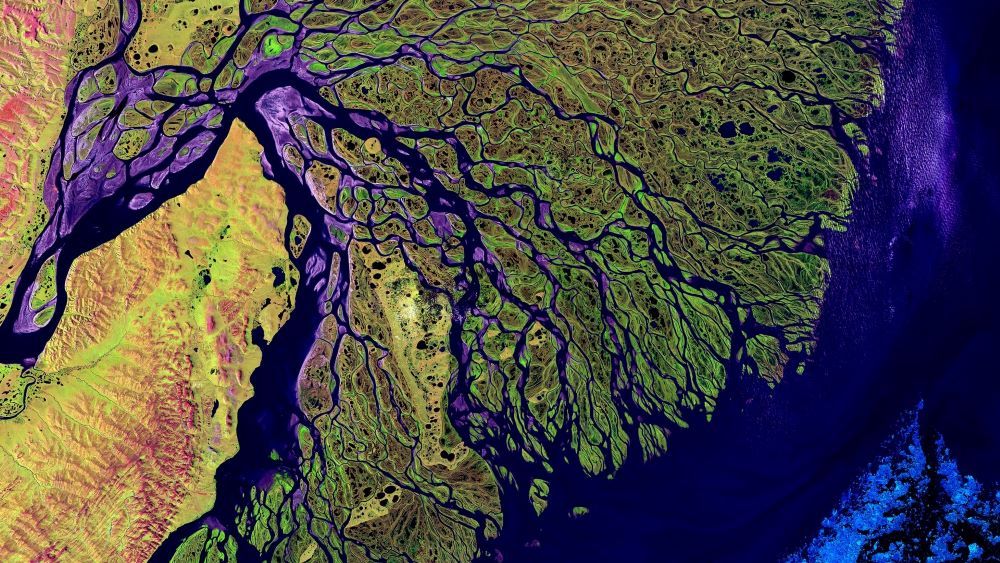
How space technologies improve our understanding of water systems
By Joanne Wilson, Deputy to the Director, ITU Radiocommunication Bureau
United Nations Sustainable Development Goal 6 seeks to ensure clean, safe drinking water and effective sanitation for all. It focuses particularly on the sustainable management of water resources, wastewater, and ecosystems.
Clean water is also crucial to address other Sustainable Development Goals (SDGs), especially food security (Goal 2) public health (Goal 3), and poverty alleviation (Goal 1).
According to the International Groundwater Resources Assessment Centre (IGRAC), groundwater represents about nearly one third of the world’s fresh water, as well as one third of the fresh water consumed by humans. Groundwater resources are essential for irrigation and the food industry.
A hidden resource
Aquifers – the underground deposits holding this precious water supply – are continually recharged by rainwater and snowmelt, or from leaks in the bottom of lakes and rivers. Many of them spread across international borders, with an estimated 300 transboundary aquifers currently serving 2 billion people worldwide, according to UN Water.
Yet groundwater, despite its vital role in sanitation, agriculture, and ecosystem services, remains often overlooked in sustainable development policy.
The ongoing over-exploitation of lakes, rivers, and aquifers is jeopardizing the reliability and sustainability of everyone’s water supplies. This could, in turn, spark geopolitical tensions.
The long-term sustainability of aquifers worldwide depends on comprehensive groundwater monitoring. Increasingly precise monitoring will be essential to inform better national water policies for 2030 and beyond.
Water unites us
The 7th International Day of Women and Girls in Science, observed on February 11, is themed “Equity, diversity, and inclusion: Water unites us”.
Water and sanitation are vital for socio-economic development, food security and healthy ecosystems – not only in developing countries, but worldwide.
They form a key component to reduce the burden of disease and improve health, as well as boost overall welfare and productivity.
By 2030, however, billions of people around the world will be unable to obtain water and sanitation services. UN-Water reports attribute this to rising demand, poor management, and failure to conserve water resources. Rising global temperatures and climate instability will further compound the problem, according to the latest report from the Intergovernmental Panel on Climate Change.
Revealing the invisible
Information on the location and distribution of groundwater has traditionally come from ground-based geophysical prospecting and drilling technology, alongside clues in the surrounding landscape and vegetation.
Since the 1970s, space technologies have played an increasingly important role in groundwater monitoring.
A combination of data collection methods, from ground-based geophysics and borehole readings to remote sensing, now provides a clearer picture of global groundwater reserves.
Geographic Information System (GIS) and Global Positioning System (GPS) mapping, for example, allow rapid, cost-effective detection, extraction, conservation, and testing of groundwater. In addition, scientists can use the data from those tools to map aquifer volume changes, enabling decision-makers to better manage water resources.
Why spectrum matters
Groundwater monitoring based on satellite systems has become key to our overall understanding of the interdependent forces that make Earth a living biome. The same forces, of course, can also threaten life underwater and on land.
This makes satellites and other aspects of radiocommunication more vital than ever – not just to connect people around the world, but to protect life and biodiversity.
The harmonious operation of Earth monitoring systems depends on the Radio Regulations – the sole international treaty governing radio-frequency spectrum and satellite orbits.
Managed by the International Telecommunication Union (ITU), the Radio Regulations ensure the availability of frequencies for all radio-based systems, including terrestrial and space-based systems, to operate smoothly, without interference from each other.
Equality and diversity in science
After an exciting and varied career as an engineer, I am proud to serve as Deputy to the Director of the ITU Radiocommunication Bureau. My position was never before held by a woman.
I am sharing these reflections on the International Day of Women and Girls in Science so that other girls and women across the world might consider careers in science, technology, engineering or math — the crucial collection of fields known as STEM.
As a firm believer in equality in science, I hope to see future generations of scientists and technologists reflect our global community — whether as researchers, practitioners, policy makers, or educators. Our STEM workforce needs to be diverse, not only in terms of gender but also ethnicity and geographic and economic background.
If you are interested in water issues, space science, technology or any STEM field, there are so many spectacular adventures waiting for you.
For further reading, see: ITU-R Radiocommunication: Climate Change
Header image: Satellite image of the the Lena Delta Reserve, the most extensive protected wilderness area in Russia. It is an important refuge for many species of Siberian wildlife. Credit: USGS via Unsplash
